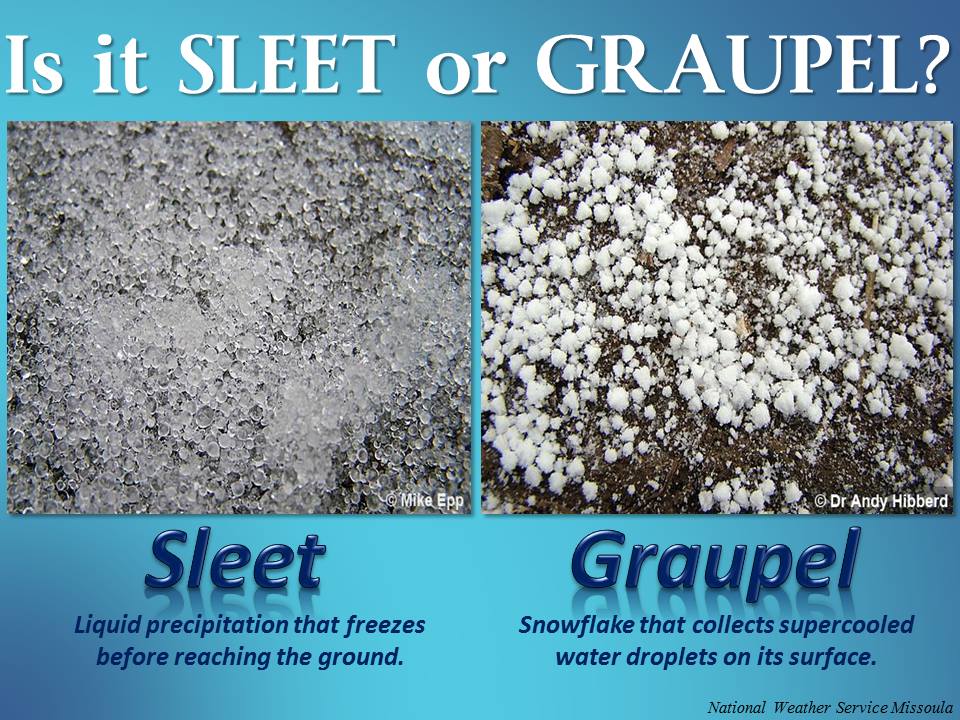Graupel
Source: Treehugger
This oddly named and little-recognized form of precipitation is essentially a mix of snow and hail. In fact, it's sometimes called soft hail because of their similarities. It's also often described as snow pellets, tapioca snow, rimed snow, and ice balls. Although "rimed snow" is decidedly less fun to say than "graupel," it's quite descriptive of how the precipitation forms.
When the atmospheric conditions are just right, snow crystals may come in contact with super-cooled water droplets called rime, a form of frost. The official term "super-cooled" means droplets are still in a liquid form at minus 40 degrees (when the temperature is this low, Fahrenheit or Celsius are the same). Only when these frigid droplets make contact with snow crystals do they begin to freeze. The result is a rimed snow crystal. As the freezing process continues, the original shape and form of the snow crystal becomes lost to its new frozen nature. This final product is graupel.
Sleet, Snow, Hail, or Graupel?
Graupel is most often confused with hail, and while both tend to be spherical, hail is generally larger and always more solid than graupel. Sleet is also sturdier than graupel; it bounces when it hits a surface. Graupel will either simply land on the surface like snow or break apart fairly easily if you touch it. Their formation process is also different, with sleet being the result of snow melting and refreezing before it hits the ground. Graupel does not take the form of a flake like snow.
How does graupel differ from hail and sleet?
Graupel is unique in its soft texture. It's smaller than hail and similarly sized to sleet. While hail is formed from raindrops carried upward by storm drafts to cold parts of the atmosphere and sleet from partially melted snowflakes that refreeze, graupel forms when "super-cooled" water droplets collect and freeze on falling snowflakes.
Graupel is relatively harmless because it's softer than hail. The only time it's threatening is when it falls in an avalanche-prone area because it can so easily spark a slip.
The word "graupel" hails from "graupe," German for pearl barley. When these snow pellets start raining down, they do look remarkably like the rounded grain they're named for.
Below is a picture of graupel.





